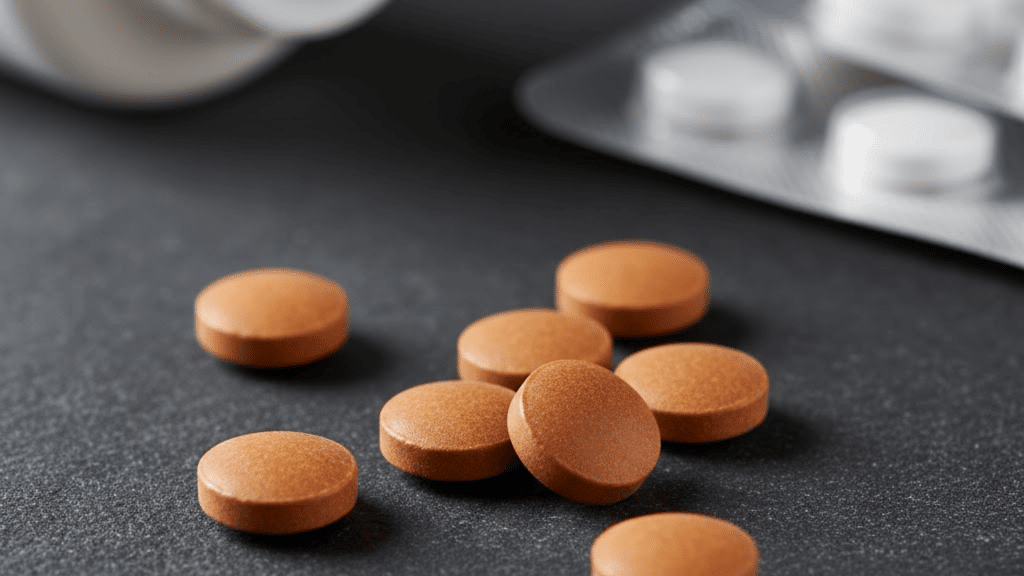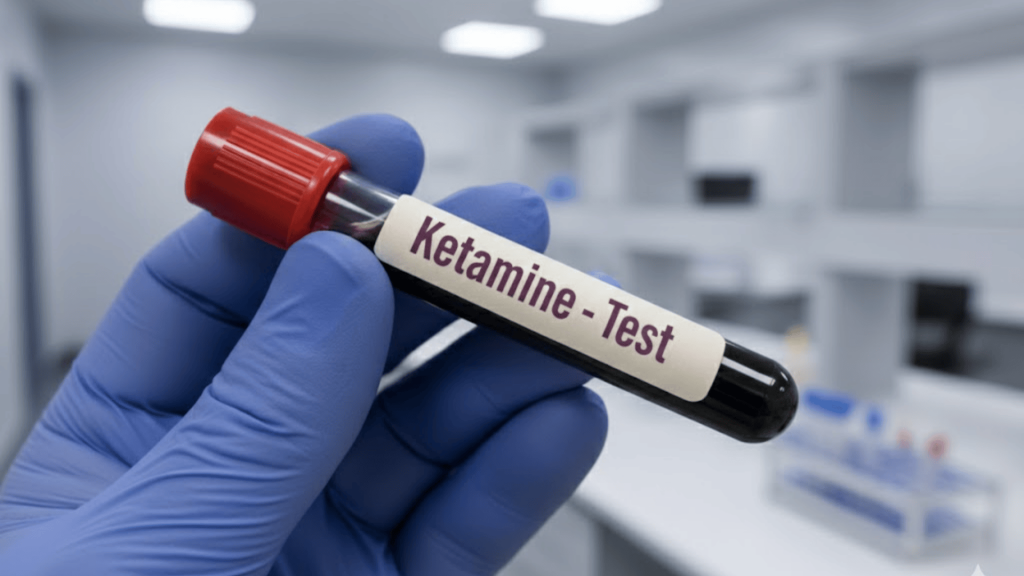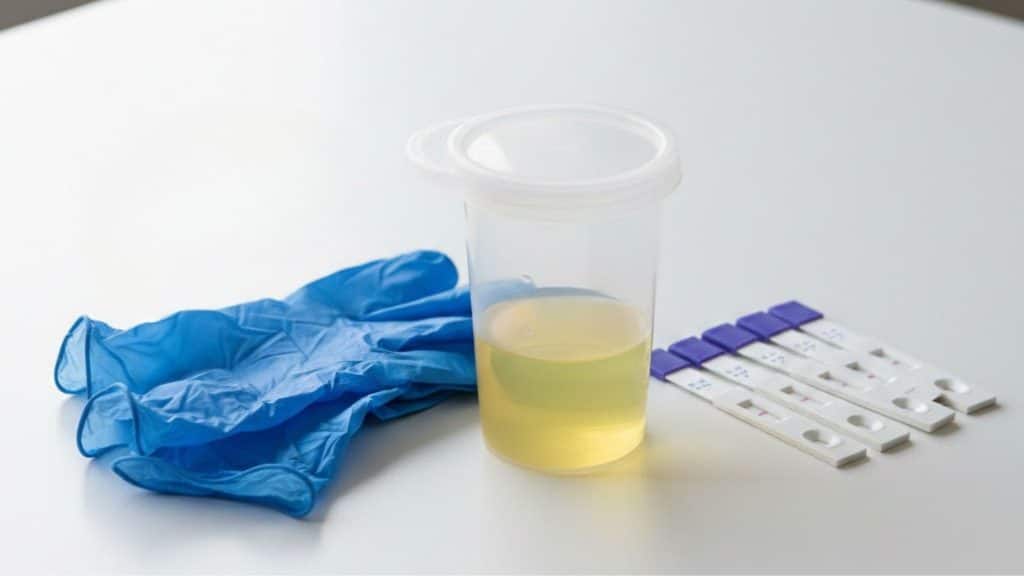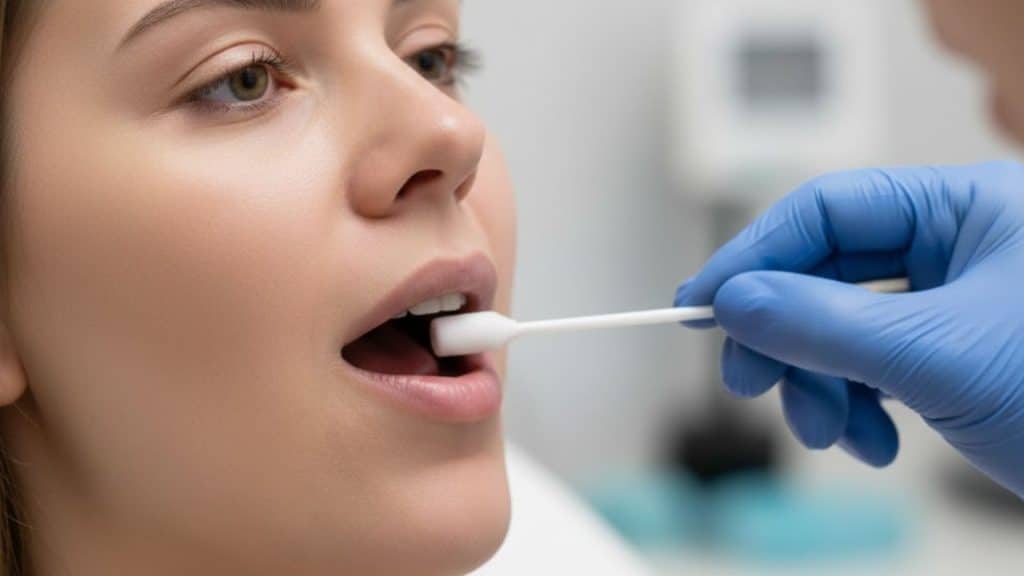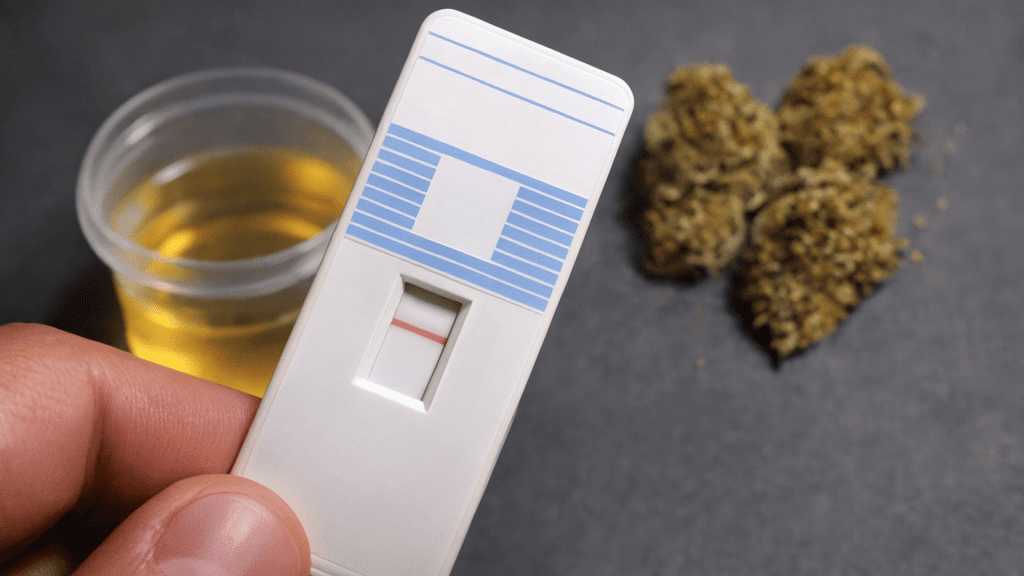You’ve probably heard someone casually say “acid” and “shrooms” like they’re basically the same trip with different names. I get it; they’re both psychedelics, both make you see wild visuals, both can feel profoundly mind-bending.
But here’s the thing: anyone who’s experienced both will tell you they have distinct personalities. LSD tends to feel electric and cerebral, while psilocybin often lands as more earthy and emotional.
In this post, I’m walking you through how these two differ, from how quickly they kick in and how long they last, to the quality of the experience itself, plus what the science actually tells us about their risks and effects.
Important Heads-Up Before We Get Started
This is purely educational content, not medical or legal advice. Psychedelics carry real risks, particularly for anyone with underlying mental health conditions, and they remain controlled substances in most places.
What are They & How Do They Work?
Let me break down what’s actually happening in your brain. When you ingest psilocybin mushrooms, your body converts psilocybin into psilocin, which then activates serotonin receptors.
LSD, on the other hand, is a synthetic compound that’s incredibly potent; we’re talking micrograms, and it hits multiple receptor targets, including both serotonin and dopamine pathways.
Here’s where they overlap: both primarily work their magic through the 5-HT2A serotonin receptor, which disrupts your brain’s default neural networks.
Think of it as temporarily rewiring how different brain regions communicate. This receptor activation is why both substances produce altered perception, emotional shifts, and those characteristic visual distortions.
The difference lies in LSD’s broader receptor profile, which contributes to its longer duration and more stimulating quality.
Shrooms (Psilocybin) vs. Acid (LSD): Onset, Duration, & Intensity
One of the most practical differences between these two psychedelics is simply how they fit into your day. If you’re considering either substance, understanding the timeline is crucial because it’s not something you can easily stop once it starts.
Here’s how LSD and psilocybin compare in terms of when they kick in, how long they last, and how sensitive they are to dosage.
| Aspect | Psilocybin (Shrooms) | LSD (Acid) |
|---|---|---|
| Onset | 20–40 minutes | 30–90 minutes |
| Peak Effects | 2–3 hours after ingestion | 3–5 hours after ingestion |
| Total Duration | 4–6 hours | 8–12 hours |
| Comedown | Relatively quick, gentler | Gradual, extended tail |
| Dose Sensitivity | Moderate (measured in grams) | Extremely high (measured in micrograms) |
The takeaway? LSD is a longer commitment; you’re essentially dedicating your entire day or night to the experience. Psilocybin offers a shorter window, which some people find more manageable, especially for first-timers.
LSD’s extreme potency also means tiny variations in dose can significantly alter intensity, while psilocybin offers slightly more forgiving measurement.
Subjective & Perceptual Differences
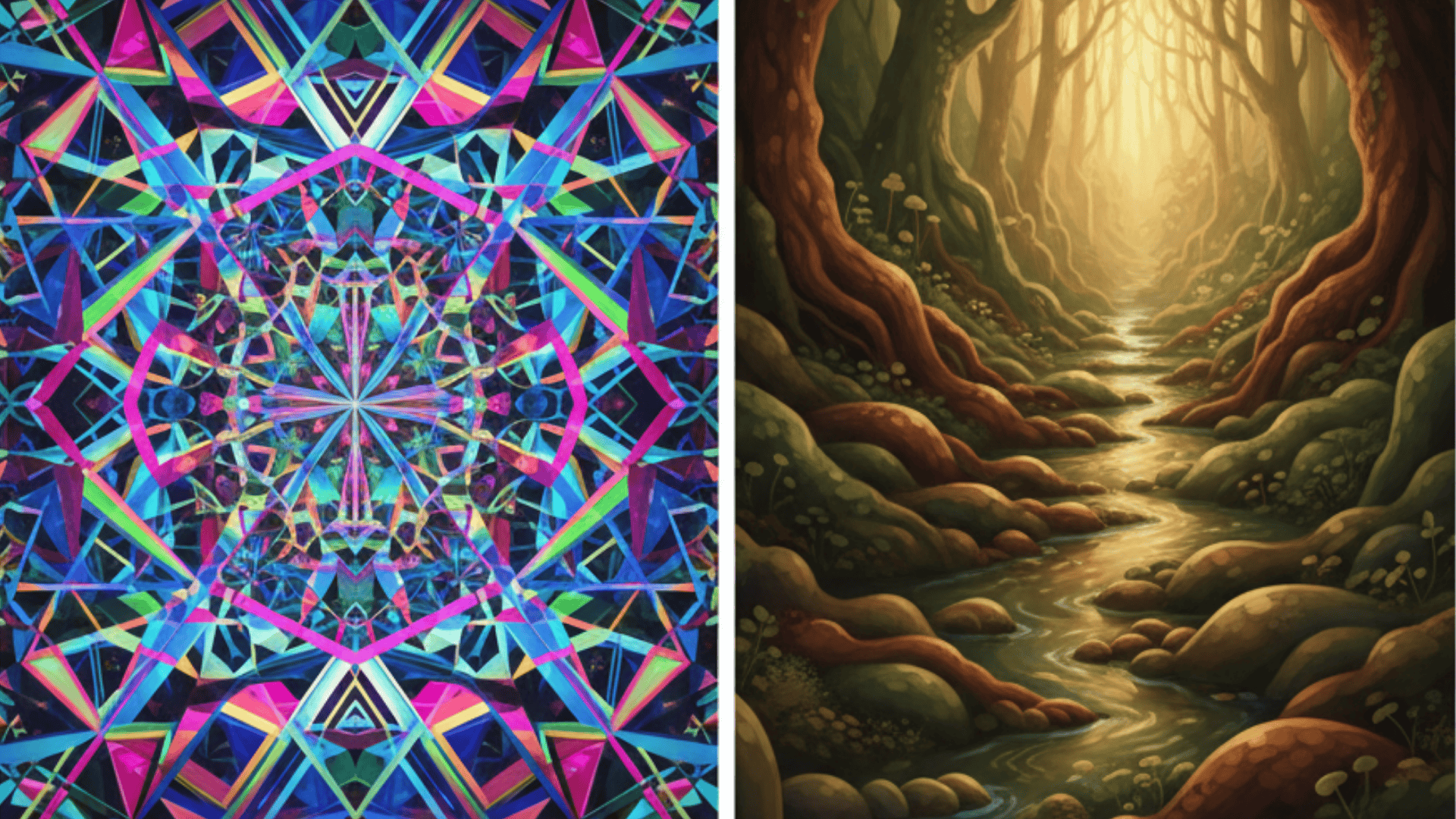
Beyond the pharmacology and timelines, what really matters is how these substances actually feel.
The experiential quality is where LSD and psilocybin truly diverge, from the texture of your thoughts to what your body is doing while your mind explores altered states.
1. The Character of the Trip
Ask anyone who’s tried both, and they’ll tell you these substances have distinct personalities. Psilocybin tends to feel organic and earthy, like the mushroom is guiding you through an emotional journey with a gentle, sometimes maternal quality.
There’s often a stronger sense of body-mind integration, where physical sensations and emotions intertwine. LSD, by contrast, feels electric and synthetic. It’s more cerebral and analytical, with a sharper, cleaner edge.
The experience tends toward mental exploration and abstract thinking rather than emotional immersion. Many describe LSD as having more control, while shrooms feel like surrendering to the experience.
2. Visual and Sensory Alterations
Both produce hallucinations, but the quality differs. LSD typically generates more intense, geometric, and kaleidoscopic visuals; think fractal patterns, vibrant color enhancement, and objects breathing or morphing with mathematical precision.
Psilocybin’s visuals are often softer and more fluid, with warmer tones and nature-inspired imagery. Synesthesia, where senses blend together, like hearing colors or seeing sounds, can occur with both, but seems more pronounced with LSD.
Auditory distortions happen with both substances, though LSD users more frequently report enhanced music appreciation and time dilation, where minutes can feel like hours.
3. Emotional vs. Analytical Headspace
Here’s where the divide becomes clearest. Psilocybin has a reputation for emotional depth and introspection. Users frequently report profound feelings of interconnectedness, confronting past trauma, or experiencing cathartic releases.
It’s the substance more associated with therapeutic breakthroughs and spiritual experiences. LSD leans toward intellectual exploration: philosophical thinking, creative problem-solving, and abstract conceptualization.
That said, these aren’t absolute rules; set, setting, and individual brain chemistry can blur these boundaries. But the general tendency holds across user reports and research observations.
4. Physical and Body Effects
Mushrooms have a notorious relationship with your digestive system. Nausea during the come-up is extremely common, and some users experience stomach cramping, purging, or general gut discomfort.
This is partly because you’re literally digesting fungal material. Many people find this unpleasant but view it as part of the purging or cleansing process. LSD produces far fewer gastrointestinal issues since you’re consuming a tiny amount of chemical on blotter paper.
However, LSD often creates more physical stimulation: jaw tension, restlessness, increased heart rate, and difficulty sleeping afterward. Both can cause pupil dilation and temperature regulation changes.
Physical, Psychophysiological, and Side Effects

While most people focus on the mental journey, psychedelics create significant physiological changes throughout your body.
Understanding these effects and the potential risks is essential for harm reduction.
Acute Physical Responses
Your body reacts in measurable, sometimes uncomfortable ways when you take either substance.
Here’s what typically happens:
- Cardiovascular and Temperature Changes: Increased heart rate and blood pressure (dangerous for those with heart conditions), plus dysregulated body temperature; you might feel uncomfortably hot or cold.
- Pupil Dilation: Nearly universal and extremely pronounced; eyes become noticeably larger and highly light-sensitive.
- Physical Discomfort: Sweating, tremors, muscle tension, jaw clenching (more common with LSD); nausea and stomach distress (more common with mushrooms).
- Motor Effects: Dizziness, balance issues, coordination difficulties during peak; most physical effects resolve as the substance wears off.
While these symptoms can feel alarming, they’re generally temporary and manageable for healthy individuals.
Psychological Risks & Drug Interactions
The mental health risks and medication interactions deserve serious attention:
- Anxiety and Bad Trips: Paranoia, disorientation, overwhelming fear, panic attacks, and disturbing thought loops are real risks, especially at higher doses or in uncomfortable settings.
- Persistent Effects: HPPD (visual distortions continuing long after use) and flashbacks can occur rarely but seriously, sometimes weeks or months later.
- Critical Drug Interactions: SSRIs dampen effects; MAOIs can trigger potentially fatal serotonin syndrome; never mix with other serotonergic drugs or stimulants.
- Individual Vulnerability: People with personal or family history of psychosis, bipolar disorder, or severe anxiety face heightened risks.
These aren’t theoretical concerns; they’re documented outcomes that require careful consideration before using either substance.
Risks, Psychological, & Long-Term Effects

Beyond the immediate trip, both substances carry potential long-term consequences that deserve serious consideration.
Here’s what the research tells us about extended risks and outcomes.
1. Triggering Latent Mental Health Conditions
Psychedelics can unmask underlying psychiatric vulnerabilities, particularly schizophrenia and bipolar disorder. Research shows that individuals with a family history of psychosis face a significantly elevated risk.
Studies indicate psychedelic use before age twenty-one correlates with higher rates of psychological distress. People with untreated anxiety, PTSD, or depression may experience worsening symptoms.
Emergency psychiatric admissions following psychedelic use, though relatively rare, can result in lasting psychological damage.
2. Persistent Perceptual Changes (HPPD)
HPPD affects an estimated four percent of psychedelic users. Sufferers experience ongoing visual disturbances: trails, halos, geometric patterns, static, persisting for weeks, months, or indefinitely after use.
There’s no established treatment. LSD appears more associated with HPPD than psilocybin in clinical literature. Higher doses and frequent use increase susceptibility, though individual vulnerability remains unpredictable.
3. Tolerance, Frequency, and Psychological Dependency
Both build rapid tolerance, so using again within days requires double or triple the dose. Cross-tolerance prevents physical addiction.
Research shows most users consume psychedelics fewer than five times annually, but ten to fifteen percent report problematic patterns.
Neither is physically addictive, though psychological dependency can develop. Spacing experiences by two-plus weeks minimizes tolerance and psychological risks.
Comparative Research Findings & Studies
A landmark study published in Neuropsychopharmacology confirms LSD produces significantly longer effects than psilocybin, with duration being the most consistent difference. Both increase heart rate and blood pressure, though LSD shows more pronounced cardiovascular stimulation.
Critically, researchers found differences are primarily dose-dependent rather than substance-dependent; high-dose psilocybin mimics LSD’s intensity, while low-dose LSD resembles moderate psilocybin.
This challenges assumptions about fundamentally distinct pharmacological personalities. Additional research in the Journal of Neuroscience observes their therapeutic applications across mental health conditions.
Safety, Harm Reduction & Best Practices
If you’re going to use either substance, understanding harm reduction principles isn’t optional; it’s essential for minimizing risks and navigating the experience safely.
- Set and Setting Matter Most: Your mental state and physical environment directly shape the experience; choose calm mindsets and safe, comfortable spaces with trusted people.
- Start with Lower Doses: First-timers should use conservative amounts (50-75 µg LSD or 1-2g mushrooms) to gauge individual sensitivity before increasing.
- Never Trip Alone: A sober, trusted sitter provides grounding during difficult moments and can intervene if things go sideways.
- Screen for Contraindications: Avoid use with a family history of psychosis, current psychiatric conditions, or medications like SSRIs and MAOIs.
- Know When to Seek Help: Prolonged panic, chest pain, seizures, or concerns about harming yourself or others require immediate medical attention.
These aren’t just suggestions; they’re the difference between a meaningful experience and a potentially traumatic or dangerous one.
Summing It Up
So there you have it: LSD and psilocybin aren’t interchangeable, even though they work through similar brain mechanisms.
The differences in duration, subjective character, physical effects, and risk profiles matter, especially if you’re considering therapeutic use or just trying to understand what friends describe.
What strikes me most is how much individual factors, your brain chemistry, mental health history, dose, and environment, shape these experiences more than the substance itself. Neither is inherently “better” or “safer”; they’re simply different tools with different personalities.
I’d love to hear your thoughts or questions in the comments below. Have you noticed differences between these substances? What surprised you most about this comparison? Let’s keep the conversation going.


